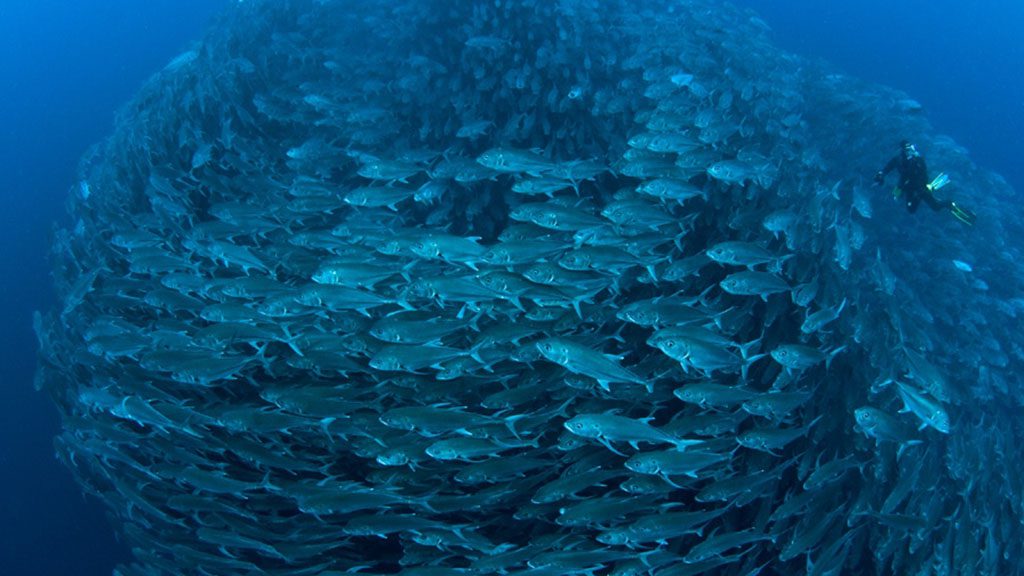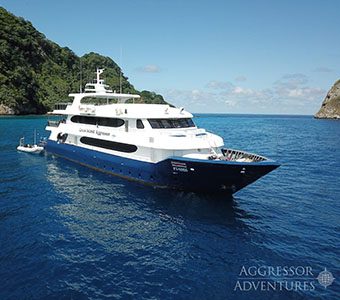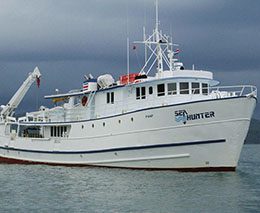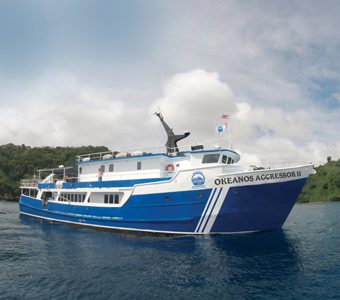Located 550km off of Costa Rica’s Pacific coast, diving Cocos Island you will experience some of the most spectacular dive sites in the world. Being so far offshore, similar to the Galapagos Islands 1000km further south, Cocos Island is an oceanic island offering advanced divers a pelagic experience.
The presence of cleaner fish attracts large schools of hammerhead and other shark species as well as many other pelagics including barracuda, giant trevally and Jacks. Oceanic manta rays and whale sharks are also known to feed in the nutrient-rich waters.
Cocos Island (or Isla del Coco in Spanish) is both tectonic and volcanic in origin. Its remote oceanic location means it is only accessible by liveaboard. The island has about 20 dive sites all in compact locations, from shallow to steep vertical walls, to whitetip feeding frenzies and schools of snapper and grunts.
The Island is located 550km off the Pacific Coast of Costa Rica in Central America. The liveaboards depart from the port city of Puntarenas the trips usually last for at least 8 to 10 days as it takes up to 36 hours to reach Cocos Island from Puntarenas.
Getting There
Those visiting Cocos Islands will fly into the city of San Jose, Costa Rica. From San Jose it is a 2-hour drive to Puntarenas for transit to liveaboards. Depending on conditions at sea, the boat trip from Costa Rica’s mainland usually takes about 36 hours. The only way to get to the island is by liveaboard dive boat, so due to popularity it is recommended to book far in advance.
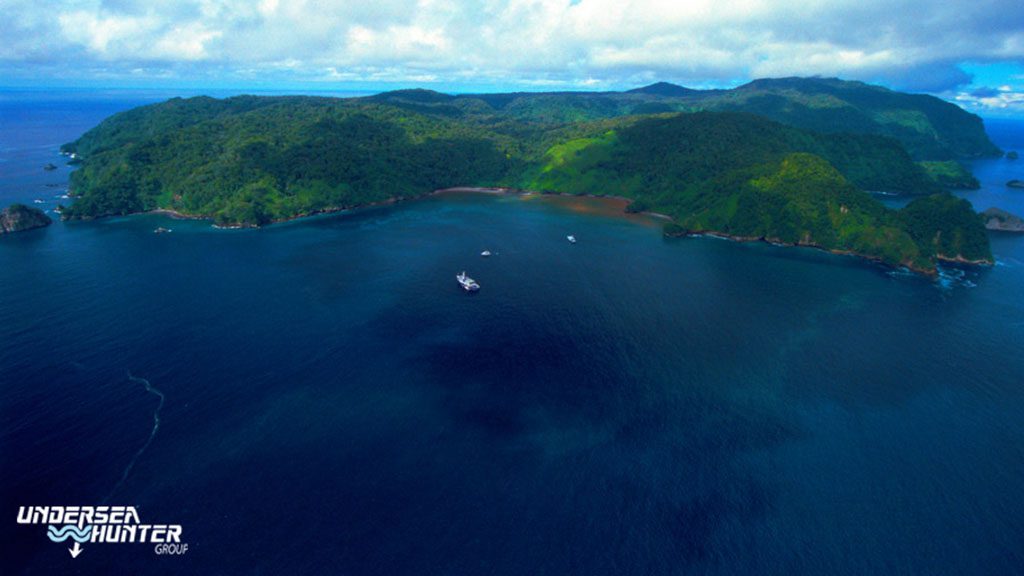
The island has two seasons, rainy and dry. The dry season runs from December to May and has the best sea conditions. For less confident divers this is the perfect time to visit, avoiding rough weather. Pelagics are still sighted in large numbers, but there are more during the rainy season.
The rainy season is from June to November and can have very rough sea conditions. It rains most of the time, however it is the peak time of year for hammerhead sharks, whale sharks and manta rays.
Water temperatures usually stay between 20-30°C though it can drop dramatically to 6°C if you hit a thermocline.
Other Activities
Cocos Island is heavily covered in jungle and massive mountains with cascading waterfalls. Most liveaboards provide a land excursion or hike to one of the many waterfalls and natural swimming pools throughout the volcanic island. The hikes are guided by park rangers and explore the various wildlife and fauna.
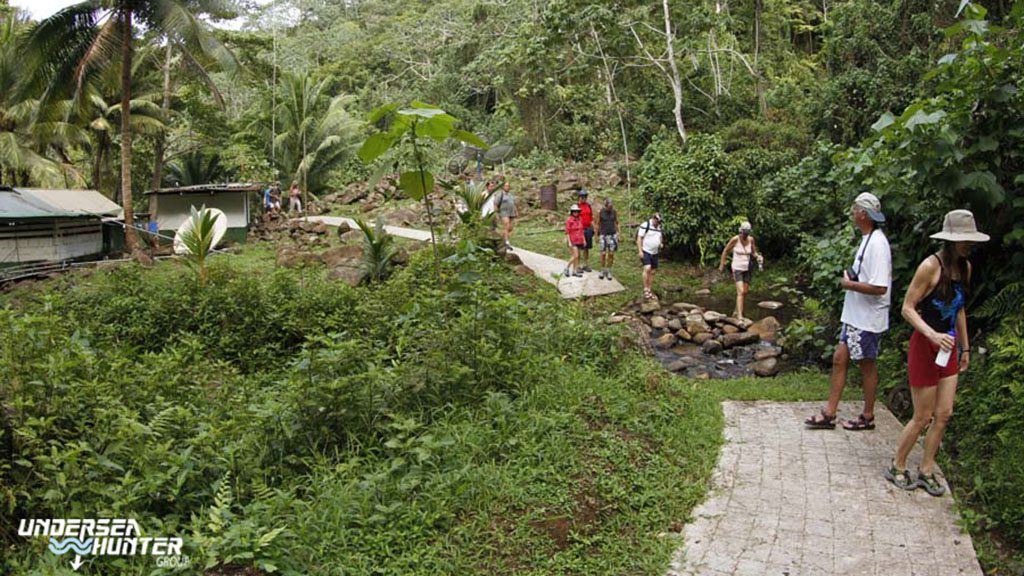
The dive sites of Cocos Island can be challenging for inexperienced divers due to water temperature, currents, surges, thermoclines and overall unpredictable sea conditions.
Only divers with a reasonable level of experience should be considering a dive cruise to Cocos Island. However, those with the requisite experience are in for some great diving on iconic dive sites like these:
Bajo Alcyone – a great place to see hammerhead sharks, but due to the rough seas and strong currents it’s suitable only for advanced divers. As well as hammerhead sharks, its remote offshore location also attracts mobula, manta and eagle rays.
Dirty Rock– this site is made up of volcanic boulders and rock pinnacles. The spot is the most popular site diving Cocos Island thanks to the aggregation of hammerhead sharks in the sheltered channel.

Dos Amigos Grande – this site descends 25m where you can see through a ‘grand arch’ that rises from a depth of 30m to 20m below the ocean’s surface. The rock formations, specifically the arch and its surrounding barberfishand cleaning stations are what make this dive most memorable.
Dos Amigos Pequeña – the great visibility here means you can generally see hammerheads come in from a greater distance than other Cocos Island dive sites.
Manuelita Deep –Manuelita Island is a 160m long islet to the north of Chatham Bay. The descent from the surface follows the boulder formations down into deeper water. The deep ledges are occupied by whitetip reef sharks, marbled rays and Pacific lobster.
Manuelita Garden – Manuelita Island is a submerged mountain forming an islet to the north of Cocos Island. The coral garden (Manuelita Inside) is one of the few coral reef dives in Cocos and is perfect for both day and night dives.
Punta Maria– an underwater mountain, Punta Maria is made up of a large crown at 27m surrounded by deeper sloping walls and pinnacles.
